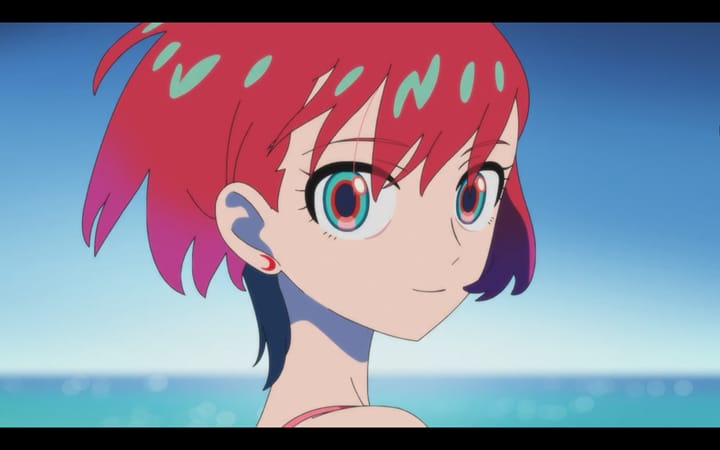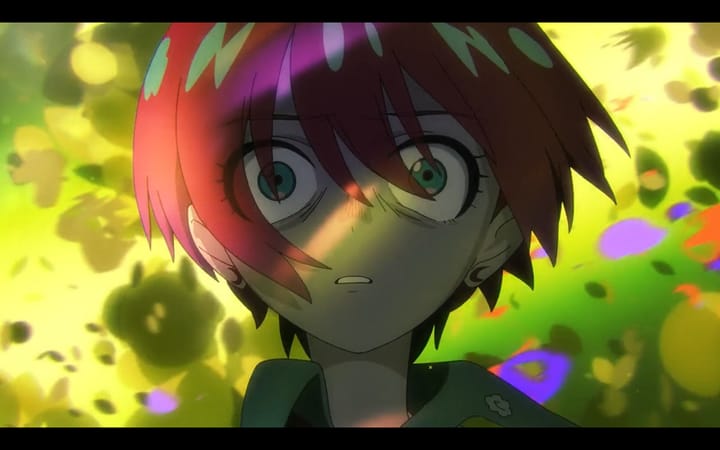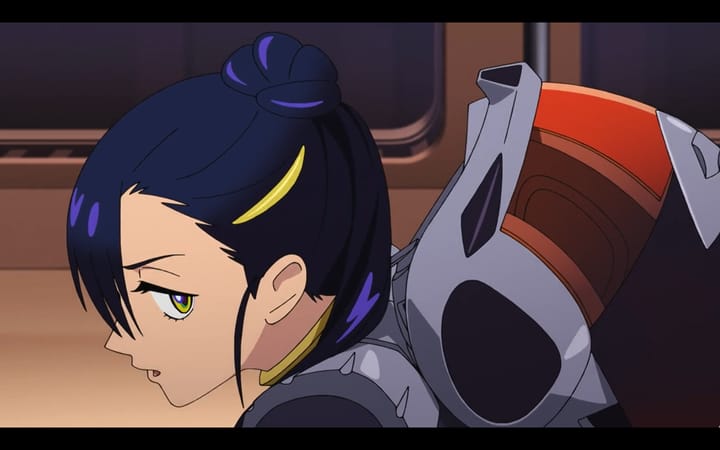Good Tennis: Let's Talk About Challengers
What does Challengers have to do with the 2014 anime classic Ping Pong: The Animation?

Welcome to ANIWIRE! This week we’re talking about Challengers and how tennis is depicted on screen. Before that, though, here’s some news from the past week or two.
News
- The summer anime season is in full swing. While I’m running a bit behind, I’ve heard good things about Shoshimin: How to Become Ordinary, Mayonaka Punch and Makeine: Too Many Losing Heroines! I also enjoyed the first two episodes of The Elusive Samurai I saw.
- The nominees for the first ever American Manga Awards were announced. Plenty of good picks, but I thought the selection for “Best New Edition of Classic Manga” was particularly strong.
- The first official trailer for the upcoming remake of comedy classic Ranma ½ was released. Some good staff are involved, but the associated studio MAPPA is still in my doghouse…
- Crunchyroll no longer has comments, a big change for the company for which reporters (like the ones at Anime News Network) are still searching for clarification.
- Media conglomerate Kadokawa acquired anime studio Doga Kobo, which animated Jellyfish Can’t Swim in the Night this spring.
Bookmarks
- For Anime News Network, Coop Bicknell wrote about Slam Dunk’s struggle to break through in the United States despite its huge popularity elsewhere.
- For Sakuga Blog, Kevin Cirugeda wrapped up the third season of Sound! Euphonium. I need to catch up…
- Amelie Doree released a new video about the cult classic visual novel SeaBed.
- Arimia compared the visual direction of Witch on the Holy Night with that of the Tsukihime remake, two aesthetically beautiful games with plenty to teach developers.
- Frog-kun wrote about the ways in which contemporary light novels lean on mediums outside of prose to convey their stories.
What I Wrote
- I’ve written a ton of stuff lately for Yatta-Tachi, including pieces about AMVs, webtoons and Ultraman: Rising. More in the works!
- For Anime Herald, I wrote about the connections between my beloved manga series Skip and Loafer and the webtoon When the Day Comes. Check out the site’s Patreon-exclusive feed for another piece of mine…
- For Comics Beat, I covered one of the most pleasant surprises of the year for me, the animated adaptation of the fantasy series Yatagarasu.
- The ongoing manga/webtoon column Beat’s Bizarre Adventure continues!
- Over on the podcast Unpacking the Shelf, my friend Alex and I have done episodes on the video game 1000xResist, the works of comics publisher Bulgilhan Press and the rabbit ronin epic Usagi Yojimbo.
AMV of the Week
Here’s "Run Makoto Run" by RealQwaga.
The following piece contains spoilers for Challengers, as well as Ping Pong: The Animation. The latter is 10 years old this year!
Art is an aging tennis pro on the hunt for easy wins at a Challenger event. He plays Patrick, a down-on-his-luck player desperate for easy money, in the finals. The two of them were college doubles partners and close friends who split over a girl. That girl was Tasha, a talented and passionate former tennis player whose career was ruined by a knee injury. Now she’s Art’s coach and life partner, but is she really satisfied? Are Art or Patrick satisfied? In the world of Challengers, a film starring Zendaya and directed by Luca Guadagnino, only one thing brings satisfaction: tennis.
I grew up watching the sport on television. In the process I internalized the specific way in which tennis tournaments are framed. Picture it now: the solemn tones of the announcers. Overhead shots of tiny figures running back and forth on the court. The yells of players, the thunk of the ball penetrating long stretches of silence. Then the ritual sound of applause. Even the specific color of the ball is a deliberate choice made for television.
The ending of Challengers breaks from this entirely. At times the camera projects from the ball’s “point of view.” At others, the camera shoots from below the court, displaying the moving legs and bodies of the players through what looks like a glass window. At these moments the ball is more a suggestion than a real physical object. You can see a similar approach in the commercial Zendaya recently did with Roger Federer.
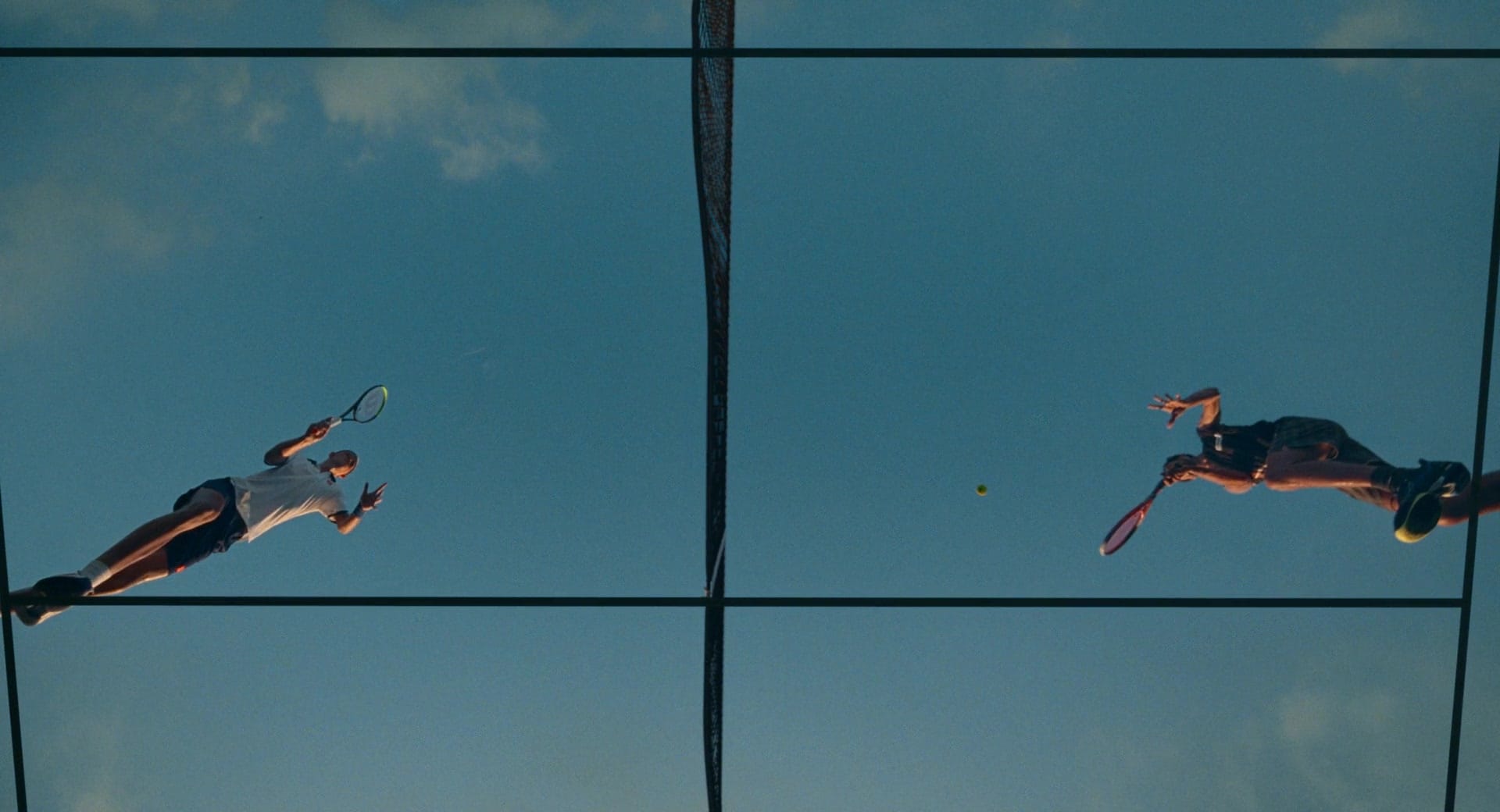
Tennis is a physical sport. It might appear ridiculous from the outside, with its pristine courts, ball-boys and white uniforms. But it’s also a grueling endurance match in which the slightest injury or mistake could mean debilitating injury. There’s enough drama in the most literal, realistic interpretation of tennis to fuel a film. That is not Challengers, which climaxes in a scene where Art jumps so high into the air to smash the ball that he goes over the net and into Patrick’s embrace for a hug.
Tennis from the outside, though, is not the same as tennis from the inside. As the sun beats down and the body struggles for oxygen, just placing yourself to hit a ball spinning at a rate that demands the right swing and angle to return can be a trial. Recording just the physical movement of the body as it contorts itself in real time is not always enough to capture the speed and ruthlessness of sports.
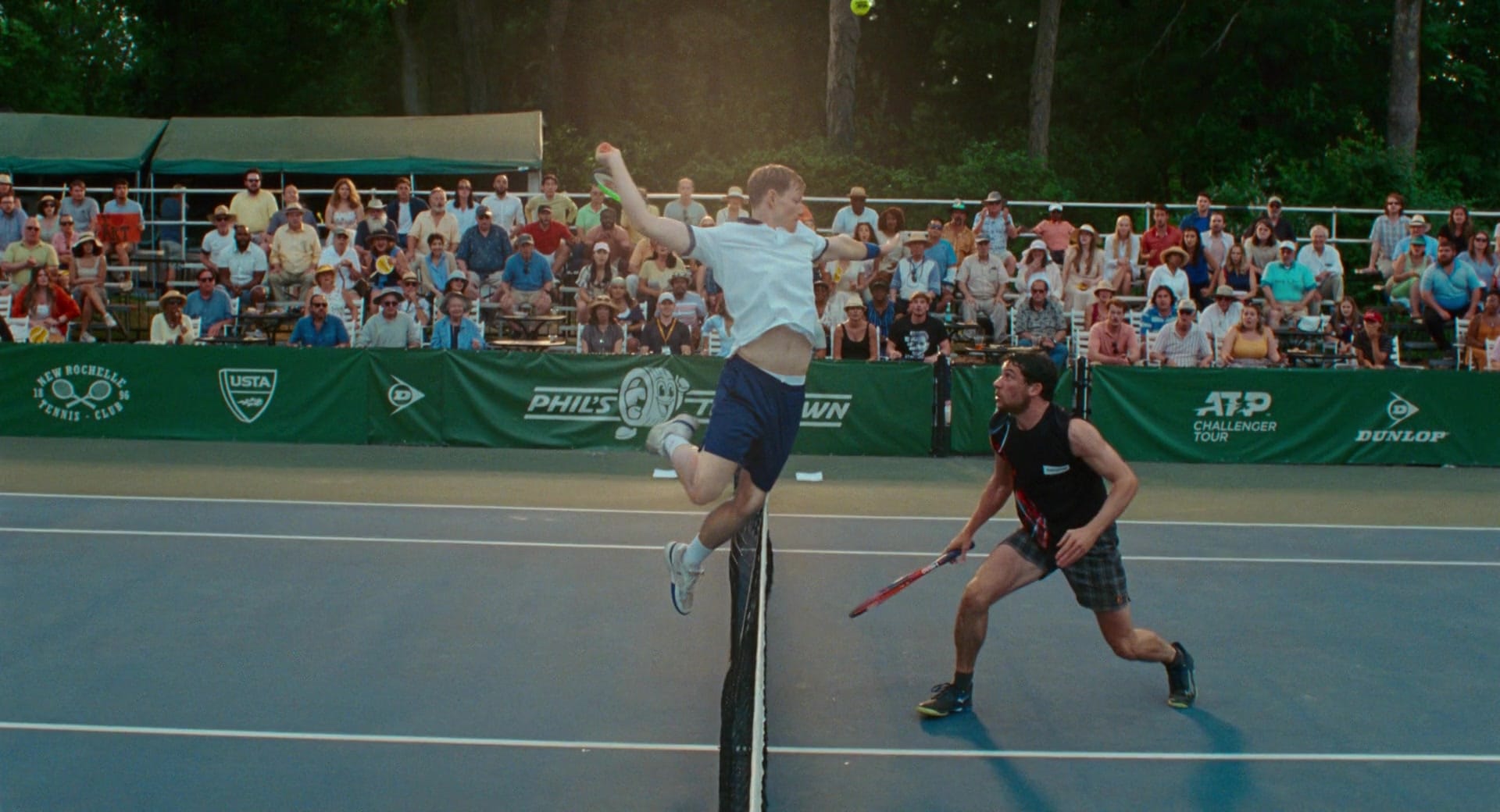
This is where animation has the advantage. The animator has full control over the body and the world that body inhabits. They may depict tennis however they please. One of my favorite such depictions is this scene from Prince of Tennis: Futari no Samurai. So powerful is Tezuka’s special shot that it (through visual metaphor) becomes the meteor that wiped out the dinosaurs. What can the opponent do against such skill? If I have a word of critique, it’s that there’s nothing about this scene that screams “tennis” to me; it could as easily be the world’s scariest soccer kick.
If I had to pick a real challenger, though, it would be Ping Pong: The Animation. The series started as a Japanese comic drawn by Taiyo Matsumoto in 1996. In 2002, it was adapted into a live action film that went out of its way to replicate images from the book on screen. Then it was adapted into anime in 2014 by one of the most acclaimed directors of that time, Masaaki Yuasa.
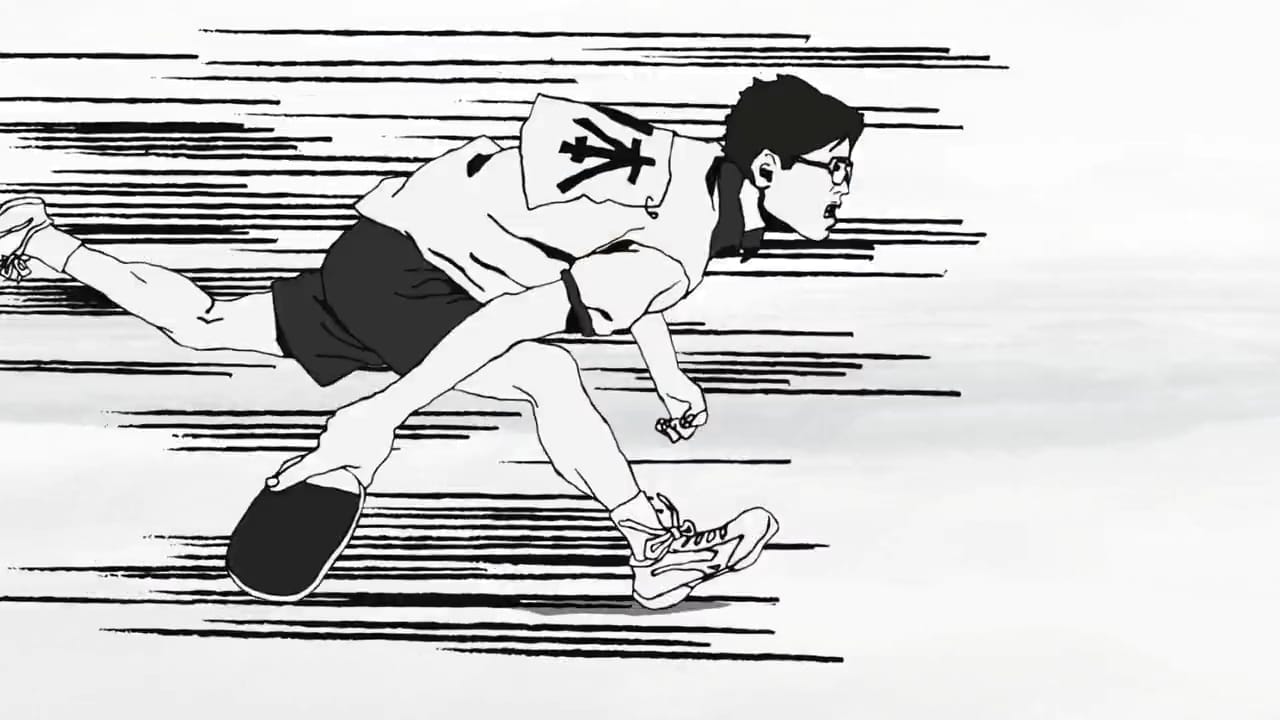
Ping Pong: The Animation was made under a famously tight schedule. Yuasa and company utilized comic-like panel storyboards and split-screens for a "motion comic" effect. But they weren't the kind of artists to be satisfied just putting the manga on television, either. So they played to Matsumoto’s love of visual metaphors, and added many of their own ideas to the mix as well. They also leaned into the manga’s staccato paneling–it is a story about ping pong, after all.
The best sequences in Ping Pong: The Animation capture the psychological landscape of the match. In the finale, our hero Peco squares off against his best friend Smile. Smile is visualized on screen as an unstoppable robot man. Yet he pushes himself so hard to return the ball that the iron breaks from his skin, revealing tender flesh. Reality deforms and warps. Peco and Smile return each other's volleys so quickly that the ball itself disappears from view. The players become the center of the universe.
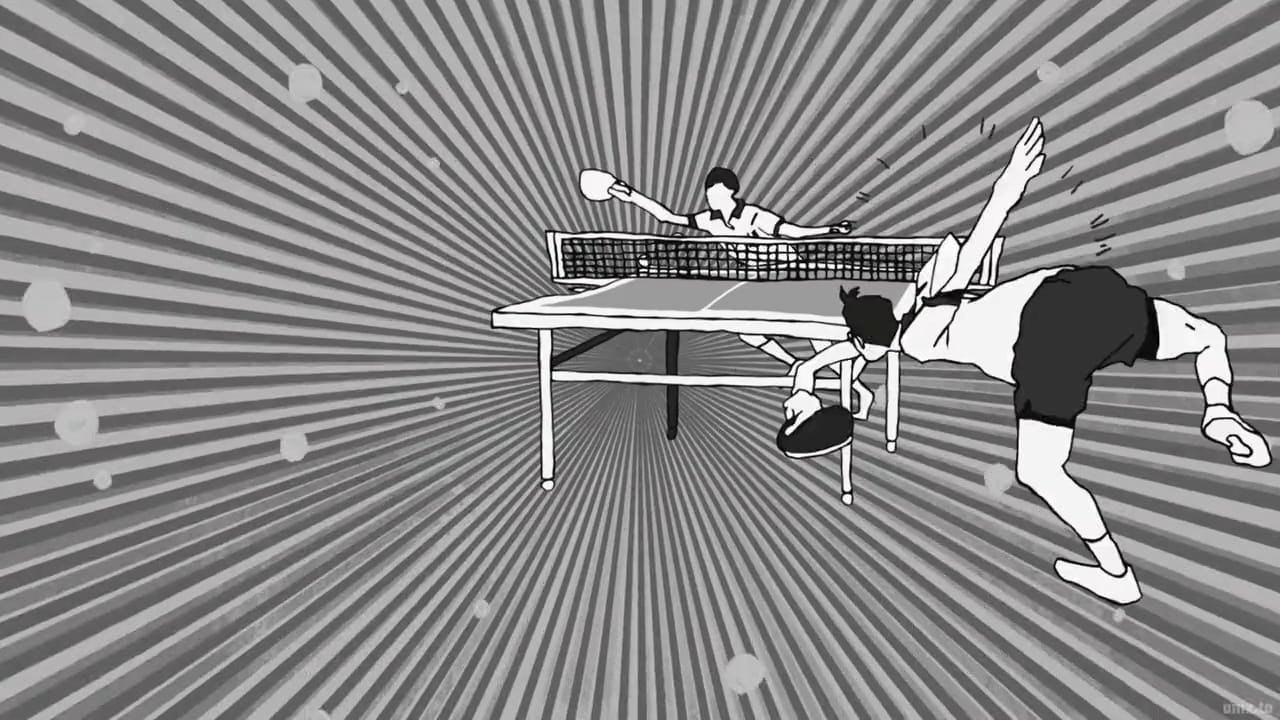
This scene is really not so different from the one in Challengers where Art jumps over the net to slam the ball into Patrick’s court like a Marvel character punching out Thanos. They transform the reality of sport into outrageous metaphor. Yet they also capture something ineffable about the way tennis or ping pong feels when you are there in the room. (I should also add here that the soundtracks of Challengers and Ping Pong: The Animation feel weirdly in tune with each other, to me. The former is by Atticus Ross and Trent Reznor, the latter is by kensuke ushio.)
Art, Patrick and Tasha tell themselves that they want to win, that they want to be remembered. What they really want is to be in that zone of perfect physical and emotional communication that occurs in some tennis games: that is, "good tennis." That is not the same as "skilled tennis." You can go for decades playing skilled tennis but not good tennis. That is the curse of professional sports.
It is no coincidence that Challengers ends without recognizing whether Art or Patrick won the match. The question of who has more talent, or who worked harder, is irrelevant. What matters most is that they played good tennis and had fun.
